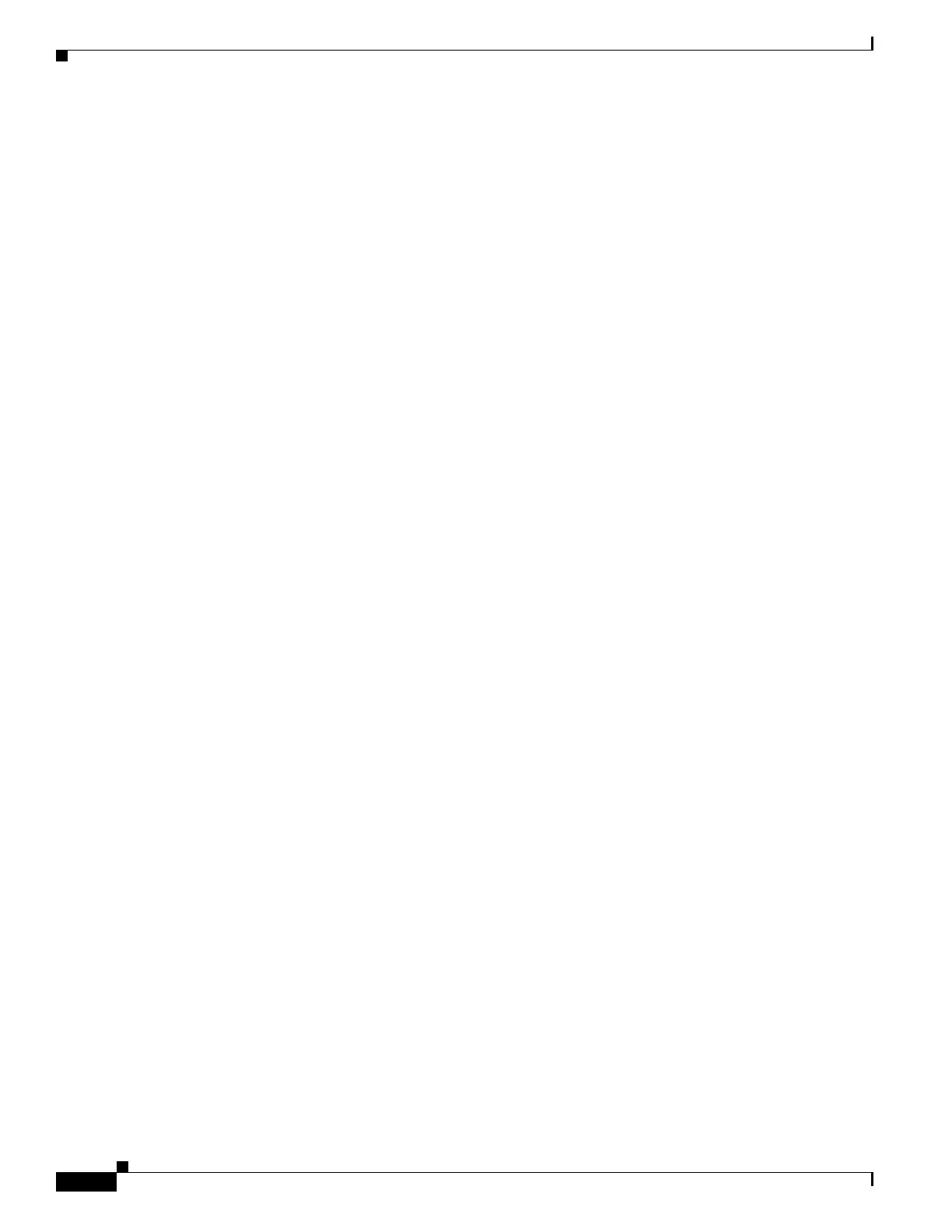8-78
Cisco ONS 15454 DWDM Reference Manual, R8.5
78-18343-02
Chapter 8 Transponder and Muxponder Cards
8.14 Far-End Laser Control
8.14 Far-End Laser Control
The 15454 DWDM cards provide a transparent mode that accurately conveys the client input signal to
the far-end client output signal. The client signal is normally carried as payload over the DWDM signals.
Certain client signals, however, cannot be conveyed as payload. In particular, client LOS or LOF cannot
be carried. Far-end laser control (FELC) is the ability to convey an LOS or LOF from the near-end client
input to the far-end client output.
If an LOS is detected on the near-end client input, the near-end trunk sets the appropriate bytes in the
OTN overhead of the DWDM line. These bytes are received by the far-end trunk, and cause the far-end
client laser to be turned off. When the laser is turned off, it is said to be squelched. If the near-end LOS
clears, the near-end trunk clears the appropriate bytes in the OTN overhead, the far-end detects the
changed bytes, and the far-end client squelch is removed.
FELC also covers the situation in which the trunk port detects that it has an invalid signal; the client is
squelched so as not to propagate the invalid signal.
Payload types with the 2R mode preclude the use of OTN overhead bytes. In 2R mode, an LOS on the
client port causes the trunk laser to turn off. The far end detects the LOS on its trunk receiver and
squelches the client.
FELC is not provisionable. It is always enabled when the DWDM card is in transparent termination
mode. However, FELC signaling to the far-end is only possible when ITU-T G.709 is enabled on both
ends of the trunk span.
8.15 Jitter Considerations
Jitter introduced by the SFPs used in the transponders and muxponders must be considered when
cascading several cards. With TXP_MR_2.5G, TXPP_MR_2.5G, MXP_MR_2.5G, MXPP_MR_2.5G,
and TXP_MR_10E cards, several transponders can be cascaded before the cumulative jitter violates the
jitter specification. The recommended limit is 20 cards. With TXP_MR_10G cards, you can also cascade
several cards, although the recommended limit is 12 cards. With MXP_2.5G_10G and MXP_2.5G_10E
cards, any number of cards can be cascaded as long as the maximum reach between any two is not
exceeded. This is because any time the signal is demultiplexed, the jitter is eliminated as a limiting
factor.
The maximum reach between one transponder and the other must be halved if a Y cable is used. For more
information on Y-cable operation, see the “8.13.1 Y-Cable Protection” section on page 8-75.
8.16 Termination Modes
Transponder and muxponder cards have various SONET and SDH termination modes that can be
configured using CTC (see the “Provision Transponder and Muxponder Cards” chapter in the
Cisco ONS 15454 DWDM Procedure Guide). The termination modes are summarized in Table 8-39.

